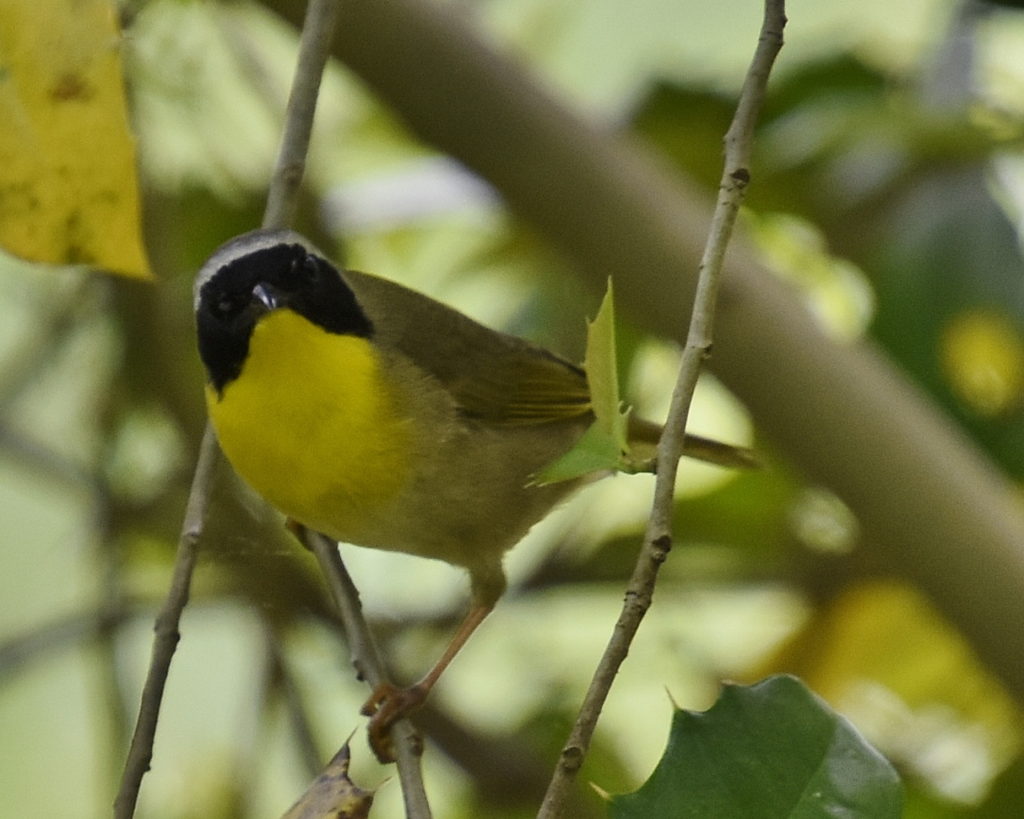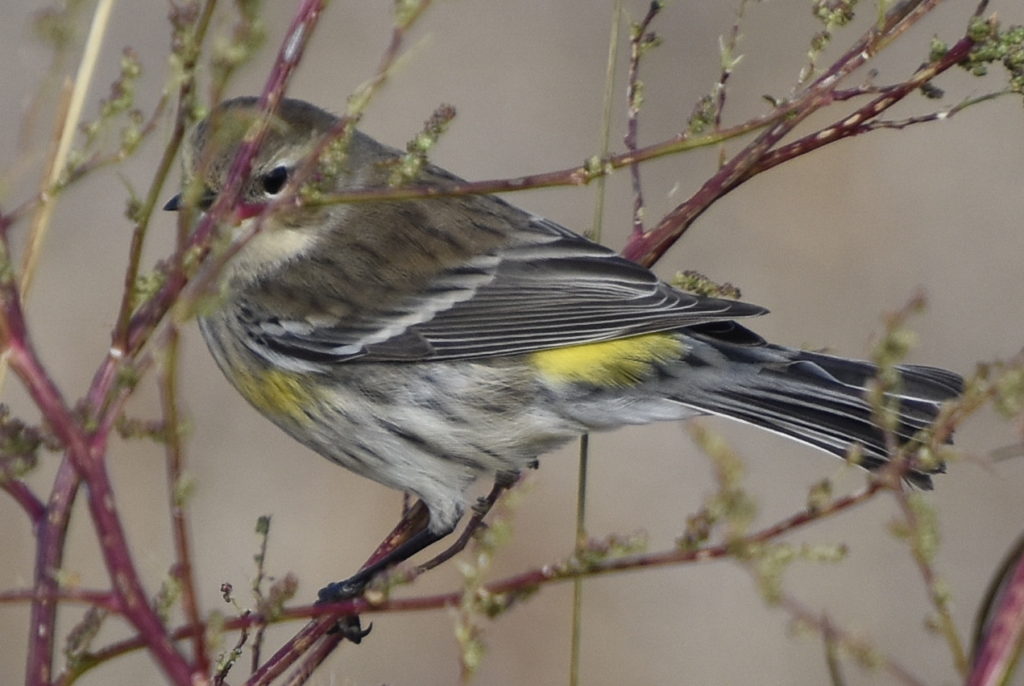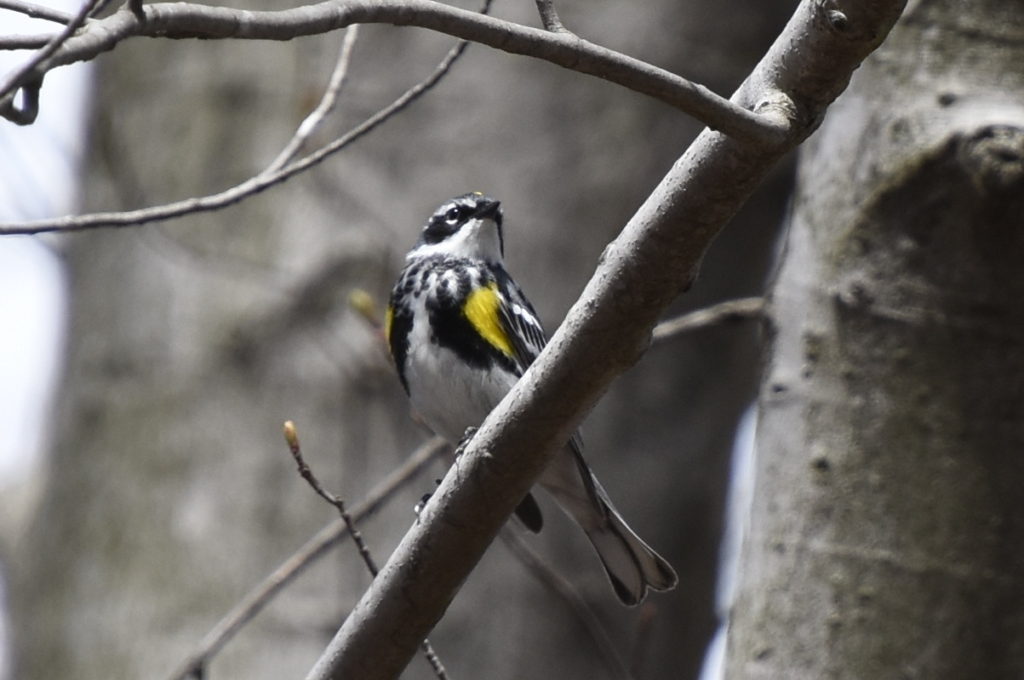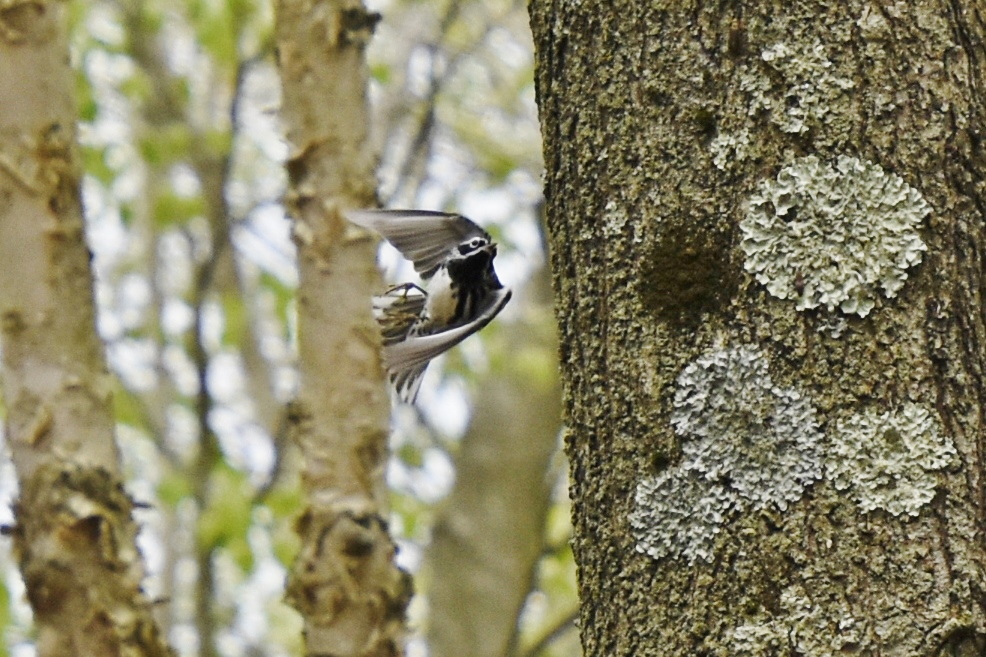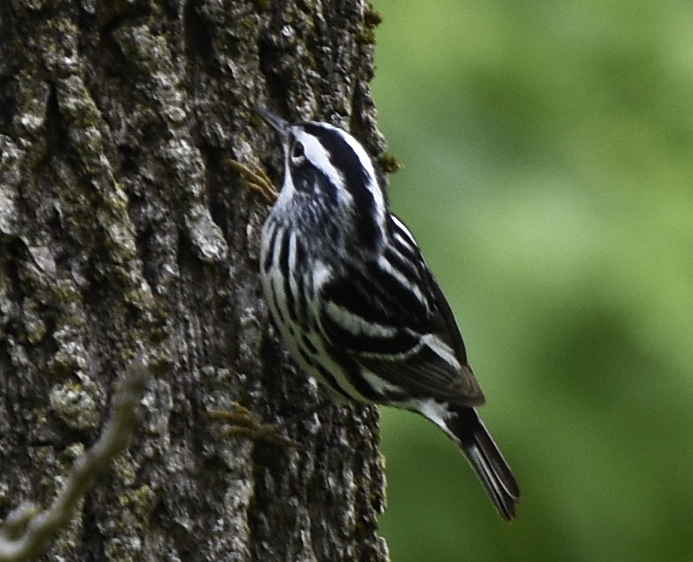Wood Warblers
Probably no time of the year is more anticipated by birders than Spring, when many birds return to their more northerly territories to breed. Among the migrants no group commands the attention of the birder like the warblers. These remarkable little birds reach our area mostly from Central and South America, although a few winter in the southern US. Some of the migrants are just passing through and will breed further north of our area and west of us in the higher elevation of the Appalachian Mountains; and a few will breed locally.
Warblers are fairly small birds and mostly insectivores. They can be very colorful in their breeding plumage with the arboreal (tree dwellers) showing the greatest variety in color and those that spend more time at ground level being more drab. They are also great songsters and many an identification is made on their vocalizations. Visual sightings are the ultimate goal but with the leafing out of the trees coinciding with their arrival, their almost constant motion, and their ability to “disappear” behind a leaf, it can be challenging.
There are twenty warbler species listed as being seen at Lumberton but most are uncommon or rare. The ones with the best chance of being seen are Yellow-rumped Warbler, Black and White Warbler, Common Yellowthroat and Palm Warbler.
The Yellow-rumped Warbler is unique among our grouping of warblers because it can also be seen during the winter in our region. It is more common on the coast but its ability to eat berries allows it to winter over in our area. Its winter or non-breeding plumage looks very different than its Spring appearance but the tell-tale field mark, the yellow rump, can usually be seen as it flies away from you or perches with its wings spread just a bit. In breeding plumage it has a distinct white throat, dark patch under the eye, grayish back, two white wing bars, a bright yellow patch on the side of the breast by the wing bars and a small yellow spot on the crown. It is very active and often flits out of a tree to get an insect. It breeds north of our area.
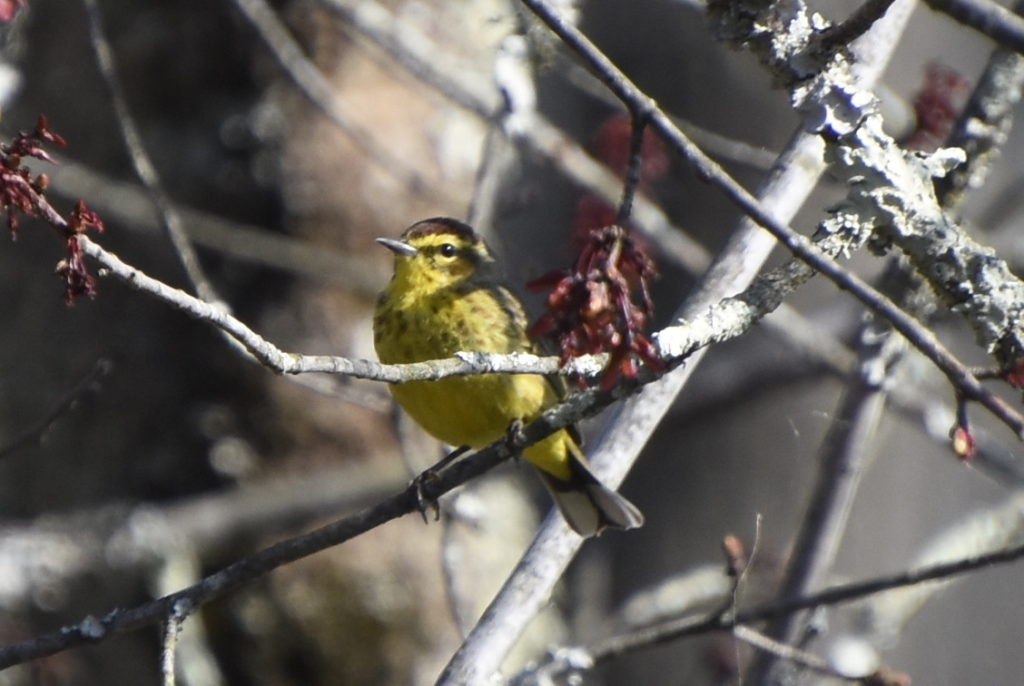
The Palm Warbler can also be found near to the ground, sometimes in small groups in open grassy areas feeding on insects. It constantly bobs its tail. In breeding plumage it has a very distinct rufous colored crown bordered by a yellow eye-line. The under parts are all yellow with rufous striping on the breast. It breeds north of our area.
Text and photographs by Robert Koch.

